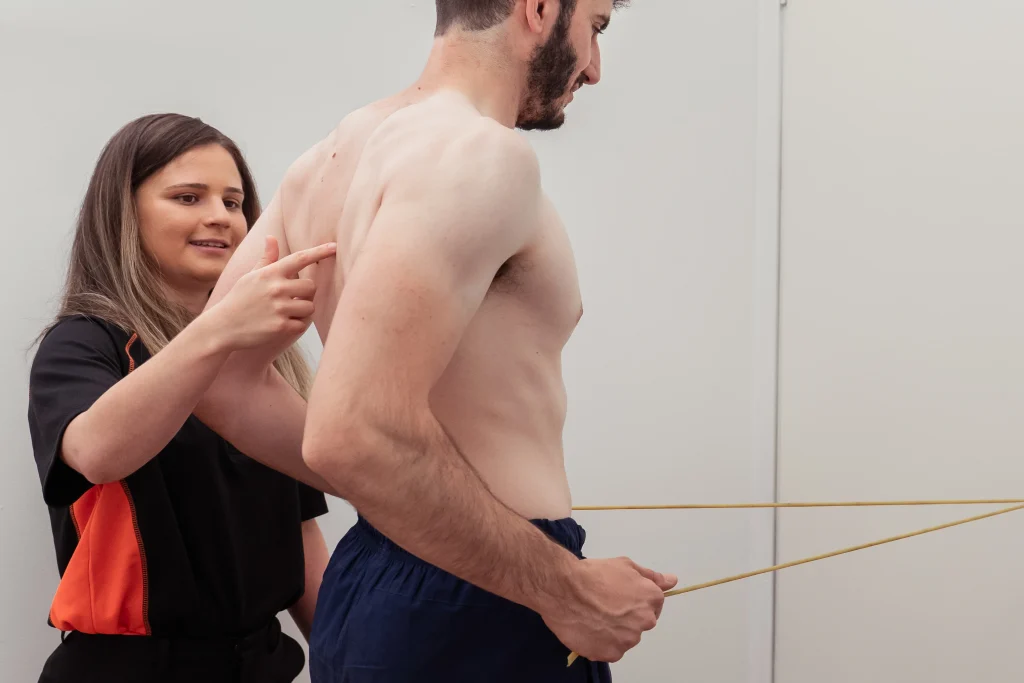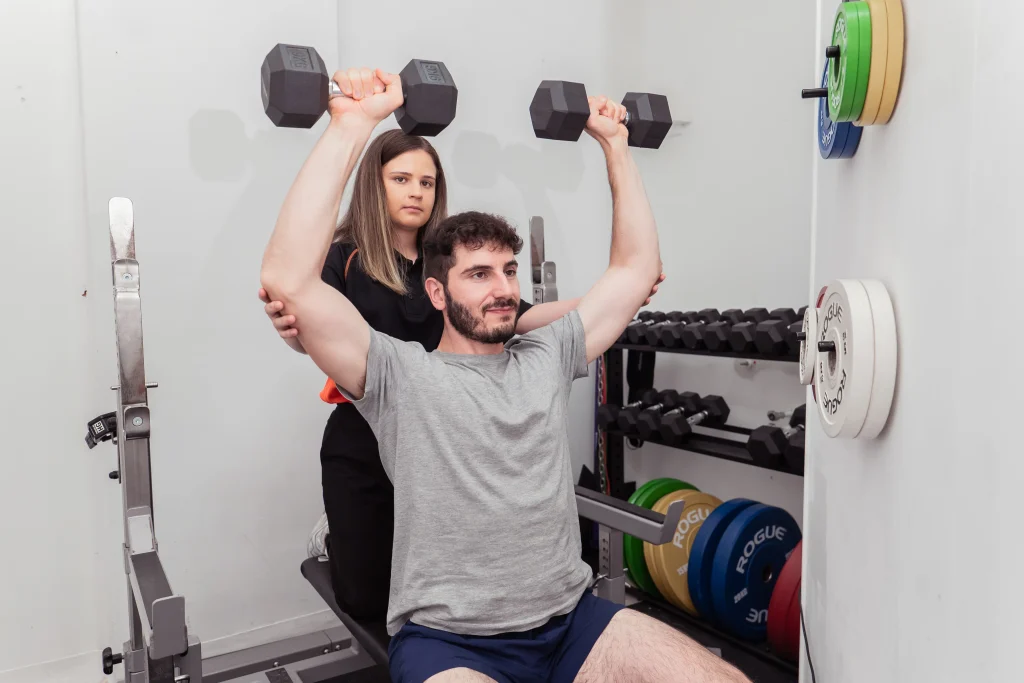
Shoulder instability can be one of the trickier conditions to manage in rehabilitation. The shoulder is naturally built for mobility, not stability, which makes regaining control more challenging than with many other joints. Managing shoulder instability isn’t about one single exercise or quick fix. It usually involves a structured plan that progresses through different stages of strengthening, stability training, and sport-specific drills. The right approach depends on the type of instability, the direction of movement involved, and the individual’s goals.
Building a Strong Foundation

A key focus in early rehabilitation is strengthening the muscles that support the shoulder. This includes:
- Rotator cuff muscles – a group of small shoulder muscles that are essential for stability
- Scapular stabilisers – muscles around the shoulder blade that help with movement and maintaining a stable base for the other shoulder muscles
- Prime movers – larger muscles like the deltoids, pectorals, and lats, which provide power once the joint is stable
Progressing Exercises Step by Step
Rehabilitation gradually moves from building strength in stable positions to building strength and control in less stable and more demanding positions. For example, early exercises might involve controlled pushing movements where the hand is supported against the floor or a wall, giving the shoulder a stable base. As control improves, the focus shifts toward exercises where the arm is free in space, forcing the shoulder to stabilise without external support.

Progression doesn’t stop there. To challenge the joint further, exercises can be advanced by:
- Increasing range of motion
- Increasing speed of movement
- Progressing from horizontal positions (arms in front) to vertical positions (arms overhead)
- Training in the shoulder’s “outer range,” where instability is often most noticeable
Later in rehab, plyometric and power-based movements, as well as return-to-sport drills, are introduced. These replicate the speed and unpredictability of sport and daily activity, preparing the shoulder for the real-world demands placed on it.
No Two Shoulders Are the Same
It’s important to remember that every unstable shoulder is a little different. Instability can occur in different directions, after different injuries, and in people with different strengths and weaknesses. Because of this, there is no one-size-fits-all program. Exercises and progressions need to be tailored not just to the injury itself, but also to the individual’s sport, lifestyle, and goals.
Summary
Rehab for shoulder instability is a step-by-step process. It starts with building a foundation of strength and control, then progresses into less stable and more challenging positions, eventually working into sport-specific drills.
The most important thing is that the program is tailored. With the right plan and progression, shoulder instability can be managed effectively and confidently. If you require guidance with managing your shoulder instability, book an appointment today with our experienced physiotherapists for a detailed assessment and tailored rehabilitation program.

